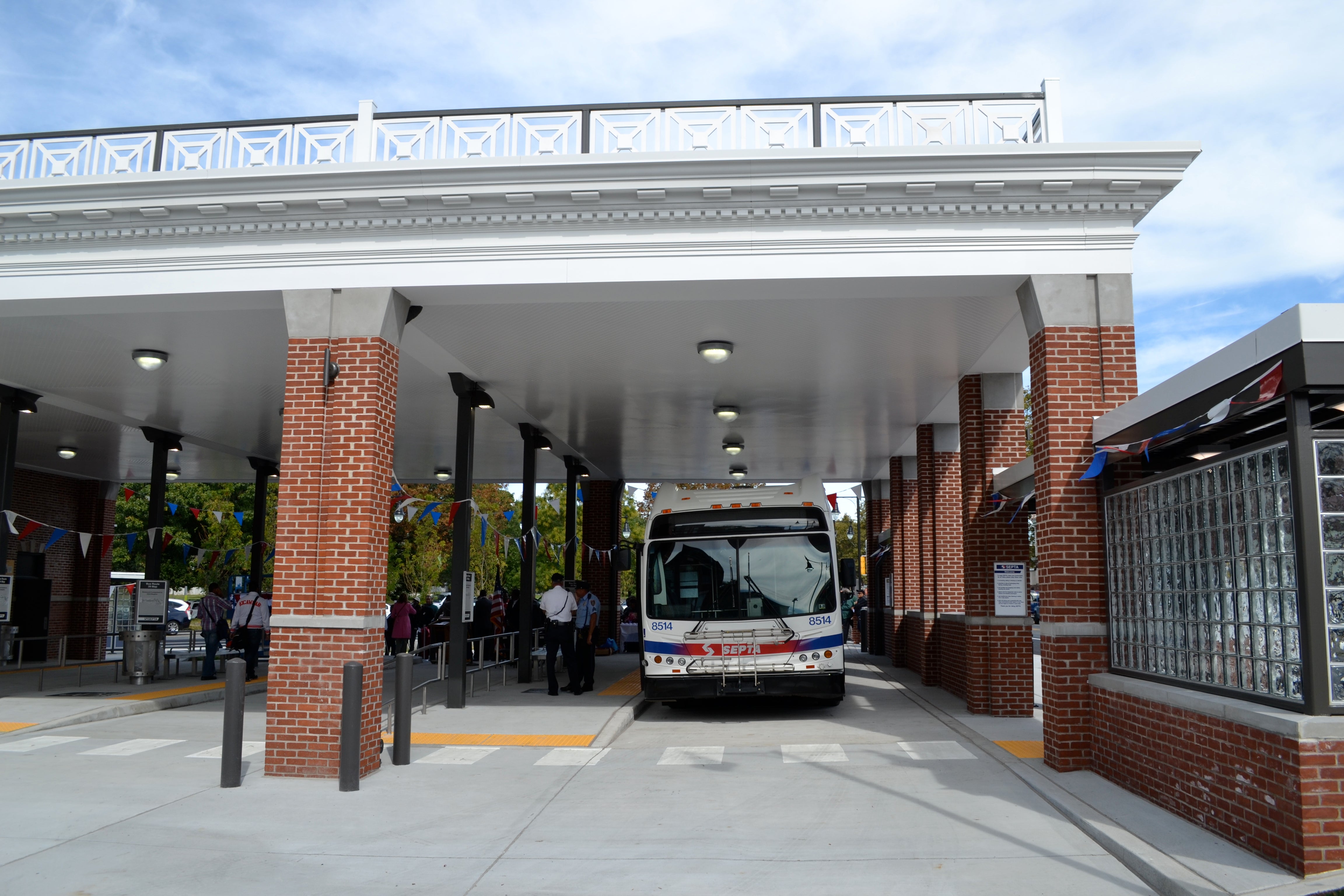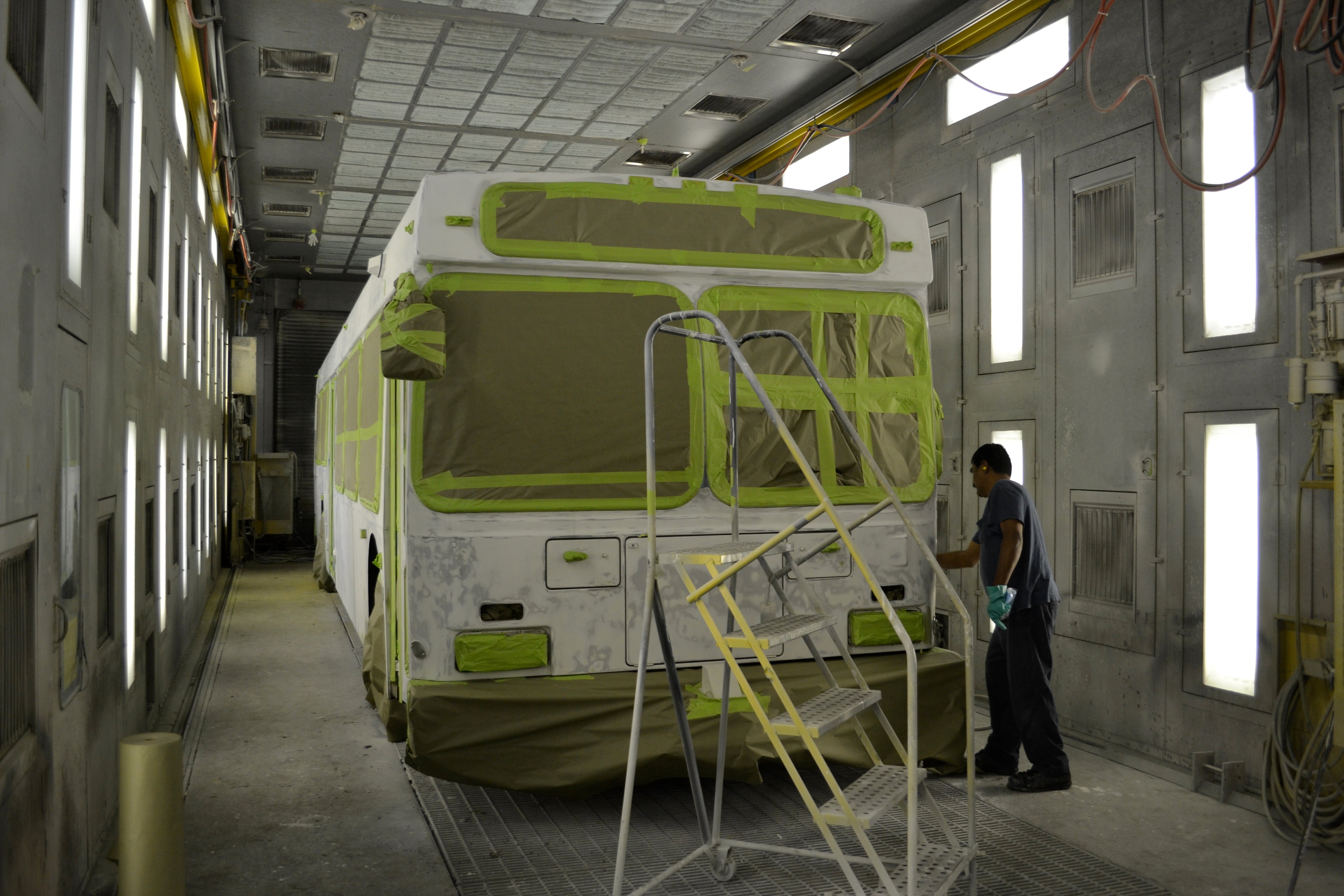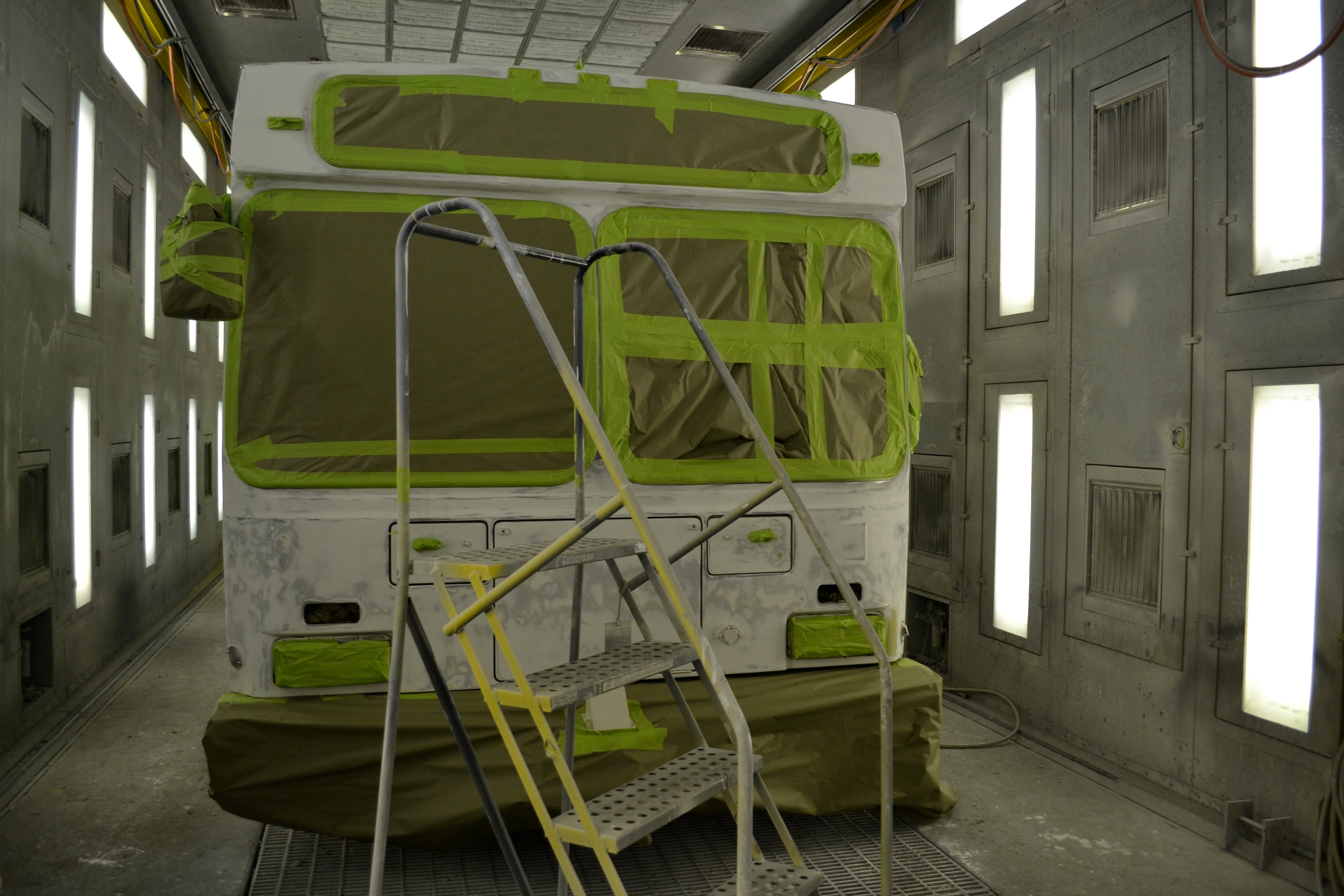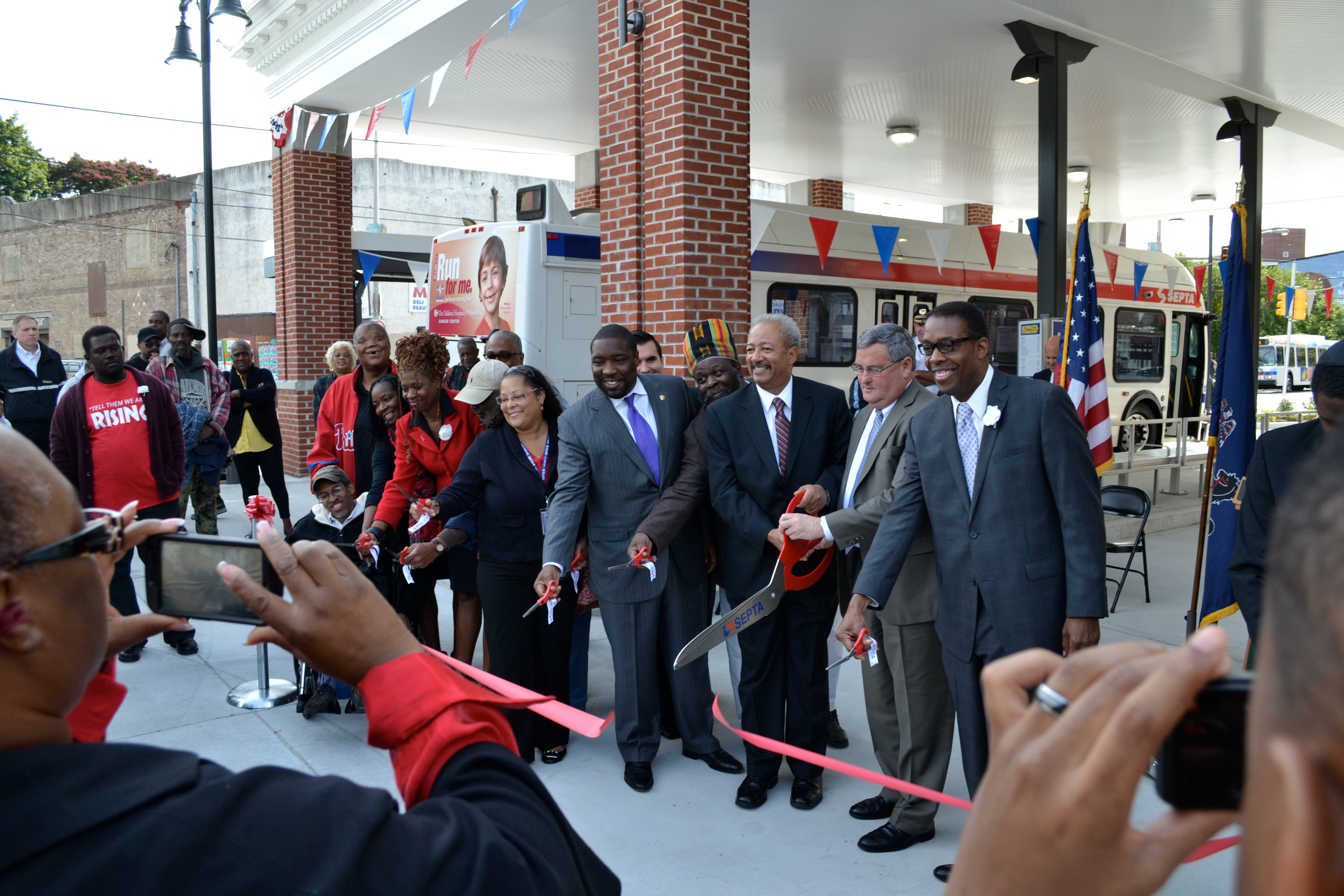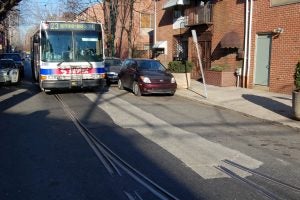Streetsplainer: Why doesn’t SEPTA use double-decker buses?
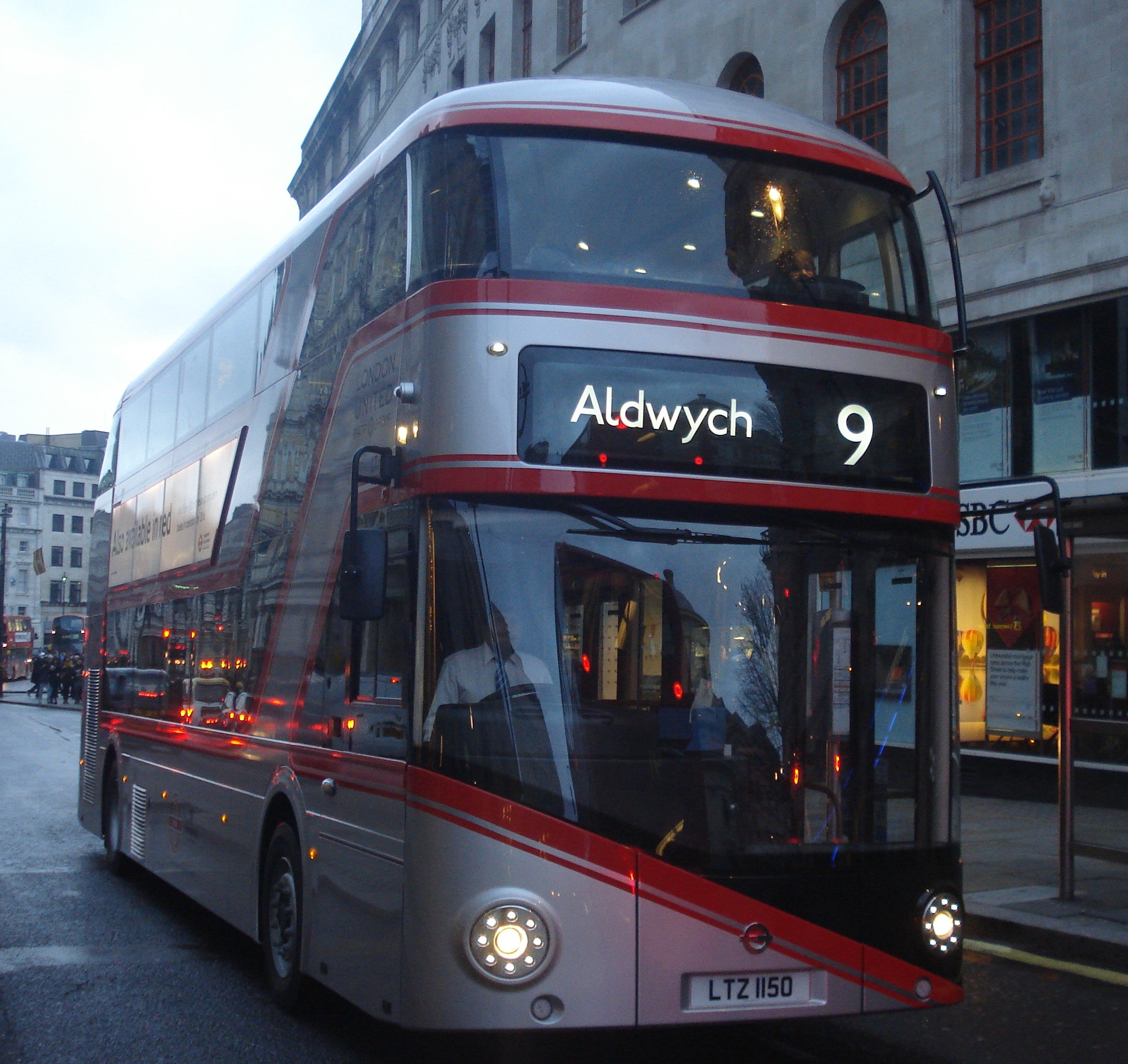
Welcome to Streetsplainers, an occasional series of answers to those often overlooked questions about our beleaguered/beloved transportation systems: Just what the heck is that thing in the road? Why on Earth would SEPTA do that? How does that weird doohickey work? E-mail Jim your questions, and he’ll chase down the answers, hopefully in a reliably on-time fashion.
“Why doesn’t SEPTA use double-decker buses?”
I hear this question all the time. It’s probably the second most popular question I get as PlanPhilly’s transportation reporter (“When will SEPTA Key be ready?” is the first and “Who the hell are you?” is third).
The question is about as popular as the buses themselves. You don’t have to be that kid who came back from studying abroad in England and now calls everyone “mate” and thanks everyone with a “cheers” to think that double-decker buses are awesome.
Riding at the front of the 2nd level feels like an amusement park ride—admittedly, something lame like It’s a Small World, but far more entertaining than your regular bus trip.
Double-decker buses also fit more passengers than similarly sized buses – the 36-foot New Routemaster double-deckers in London have room for 62 sitting passengers, whereas SEPTA’s 40-foot buses only seat 40. Increased capacity without adding length is why SEPTA’s looking to add bi-level coaches to its Regional Rail fleet.
So what’s keeping SEPTA from trying to emulate the inimitable Transport for London? Is Philadelphia’s refusal to reach up to the bus heavens just a product of lingering Anglophobia in the cradle of liberty?
Not really, says SEPTA spokesman Manny Smith. SEPTA has a wide range of interrelated and complex reasons why it hasn’t adopted double-deckers, including international trade regulations, civil rights law, and low overpasses.
OK, it’s mainly low overpasses. But that’s not the whole story.
LONDON CALLING TO THE FARAWAY TOWNS: HEY CHECK OUT THIS DOUBLE-DECKER!
London, like Philadelphia, uses smaller buses on some of its less busy routes. In other words, not every bus in London is a double-decker. TfL’s buses come in a wide variety of sizes and shapes.
In fact, Mayor Ken Livingstone discontinued operations of old double-decker AEC Routemasters in 2005, opting instead for new articulated hybrids a lot like SEPTA’s, only Londoners call their accordion-like buses “bendy buses”, whereas Philadelphians call our buses things I’m not allowed to print.
From 2005 until 2011, London’s double-deckers were just like Philly’s: used only by site-seeing tours and Megabus.
Before he discontinued the double-deckers, Livingstone once said that anyone who would get rid of London’s double-deckers would be “a ghastly, dehumanized moron.” His mayoral opponent in 2008, Boris Johnson, agreed whole heartedly with that sentiment and made the commission of a “21st century Routemaster” a prominent part of his campaign platform. Johnson won that race and celebrated the double-decker’s return to regular service in 2011. The Guardian called the so-called “Boris Buses” Johnson’s signature policy, one that symbolized the Conservative politician’s nationalist, Eurosceptic politics.
Despite the feelings of many PlanPhilly readers otherwise, no Philadelphia politician is going to win on a platform of trolley line restoration anytime soon. But that’s not the only major difference between how SEPTA and TfL approach buses.
The New Routemasters are 14 feet 5 inches tall. That’s taller than a handful of Philadelphia overpasses: the SEPTA Regional Rail line over Spring Garden has a clearance of just 11-feet, 4 inches, for example, which would cause problems for a taller Route 43 bus. A double-decker on the Route 40 line would smack right into the Penn logo adorning the freight rail overpass just west of the South Street Bridge.
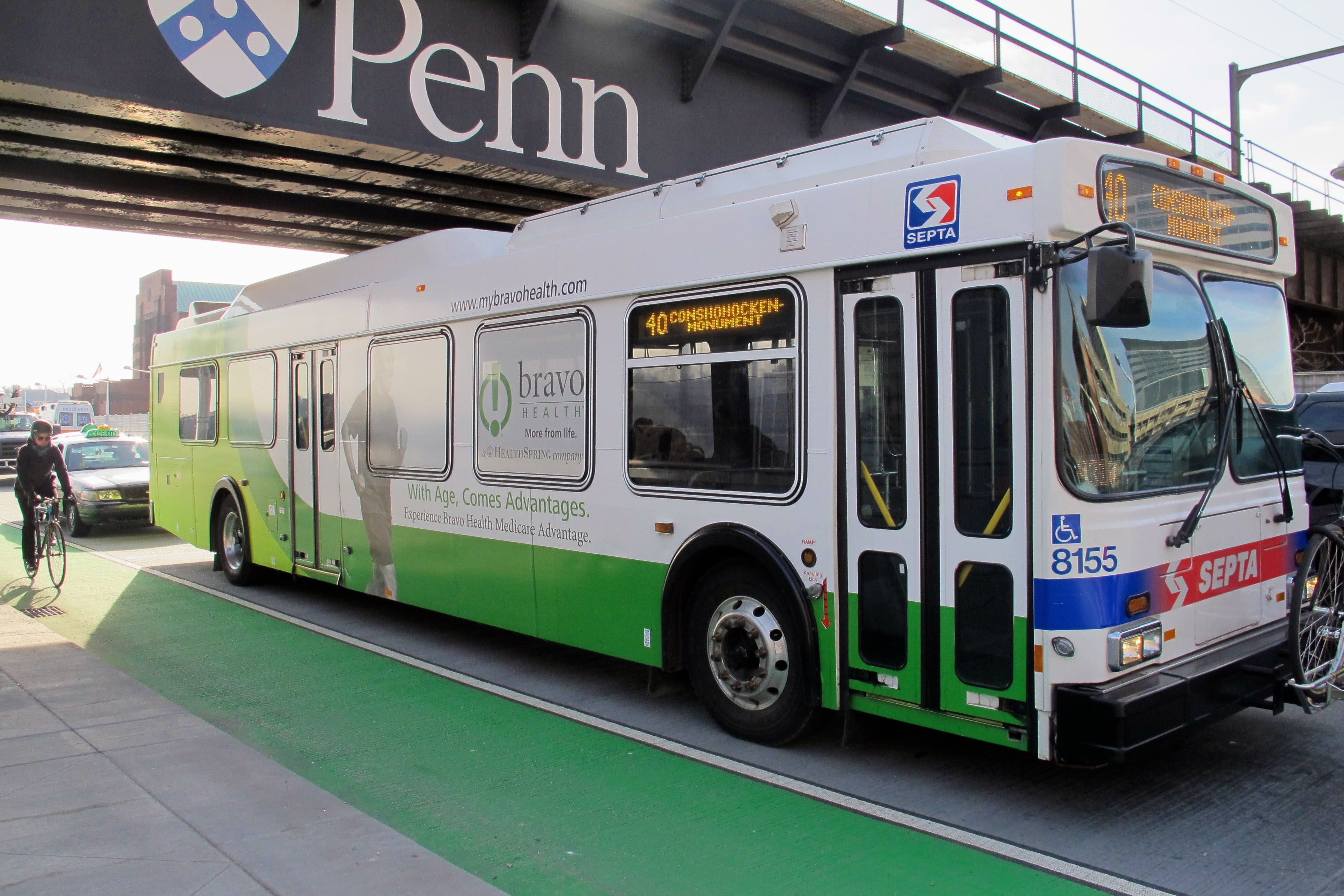
And it’s not just low overpasses SEPTA would have to worry about: some traffic signals dangle above the street at a height low enough for double-deckers to hit.
Even though TfL has operated double-deckers since the 50s, London also has some low overpasses where only single-story buses can operate. So why couldn’t SEPTA do the same thing, and run shorter buses on those lines?
Because the United Kingdom never had a race problem like America (at least, not until recently).
In America, transit authorities like SEPTA need to comply with Title VI of the Civil Rights Act of 1964. Title VI prohibits discrimination on the basis of race, color and national origin by any recipient of federal financial assistance.
If SEPTA gave some neighborhoods better buses than another – like upgrading the buses servicing Chestnut Hill but using old jalopies in Strawberry Mansion– then it would violate Title VI.
To prevent that from happening—even inadvertently—SEPTA has a policy of rotating its buses. “The buses get shifted from depot to depot,” said SEPTA’s Smith. “Our average bus is 6.5 years old; we try to maintain that [age] at all the depots.”
Adding a series of new buses that couldn’t run on certain lines due to height restrictions would add a bunch of logistical headaches that SEPTA simply doesn’t want to deal with.
WINDING YOUR WAY DOWN ON BAKER STREET… IN A BENDY BUS
Title VI isn’t the only federal law that makes double-deckers rare in America. The so-called Buy America Act requires transit agencies that accept federal funds to purchase American-made equipment.
Perhaps not surprisingly, there aren’t a ton of US companies that make double decker buses. That’s started to change recently, with Las Vegas and Minnesota finding American companies to do completion work on buses designed and partially built by Scotland’s Alexander-Dennis Ltd., thereby technically complying with the federal law. It’s what legal experts call a “loophole.”
Neither of the companies SEPTA currently purchases buses from—New Flyer and Nova Bus—offers double-deckers.
Now, I know what some of you are thinking right now. “STOP FEEDING ME YOUR LIES, SAKSA! THOSE ARE BOTH CANADIAN COMPANIES! THAT’S WHY SEPTA BUSES REEK OF MAPLE SYRUP!”
First off, hey, why are you shouting? We’re talking about trade regulations and bus fleet acquisition, nothing to get too worked up about.
Second, you’re right, Nova Bus and New Flyer are both headquartered in Canada. But thanks to NAFTA and some World Trade Organization rules, goods made in the Great White North can sometimes satisfy the Buy America Act’s requirements. And, under the act, where the manufacturer is domiciled is less important than where the product is primarily built.
MORE REASONS THAN ALL THE UMBRELLAS IN LONDON
It’s not just far-reaching federal laws and low-hanging overpasses that make SEPTA less than keen on double-deckers, though.
Articulated buses sit more people than double-deckers. “Basically, instead of going up, we’ve gone long,” said Smith. SEPTA’s articulated 60-footers can fit 105 passengers (including standing passengers), but London’s New Routemasters can only hold 87. The double-decker’s novelty would wear off pretty quickly once they began skipping more stops than today’s articulated buses already do.
Overpasses and low traffic lights aren’t the only height restrictions SEPTA would have to deal with. Its bus depots weren’t built for tall vehicles. Same goes for SEPTA’s bus loops and repair shops. Building new or retrofitting the old facilities to make double-deckers fit would cost a prince’s ransom.
SEPTA has also made a commitment to replacing its aging diesel fleet with hybrid buses. The transit authority recently put it’s 700th hybrid-electric bus into operation, making about half of it’s 1,400 bus fleet hybrids. While the New Routemasters in London are nominally hybrid-electrics, battery problems have plagued that fleet, meaning they often run on just diesel.
And hybrid number 700, which is actually Bus #7353, is a 60-foot articulated bus, one of 115 SEPTA plans to eventually have in operation. SEPTA is hoping to expand the routes it uses articulated buses on now, eyeing Route 17 for the near future.
And those new articulated buses are more accessible than double-deckers, explained Smith. While double-deckers are wheelchair accessible, the second floor of those buses is effectively off-limits to many elderly riders.
Smith also mentioned safety. British wit George Mikes once said, “An Englishman, even if he is alone, forms an orderly queue of one.” To which we can arguably say: a Philadelphian, even if he is alone, forms a disorderly mob of one. SEPTA worries about having blind spots on its buses where operators wouldn’t be able to see, like a second floor. Unlike on SEPTA’s subways, which are patrolled by SEPTA transit police, it’s up to the operators alone to control any unruly customers.
So why no double-deckers? Safety, accessibility, fuel efficiency, passenger capacity, maintenance facility infrastructure, federal laws, low overpasses and the specter of King George III, that’s why.
WHYY is your source for fact-based, in-depth journalism and information. As a nonprofit organization, we rely on financial support from readers like you. Please give today.



